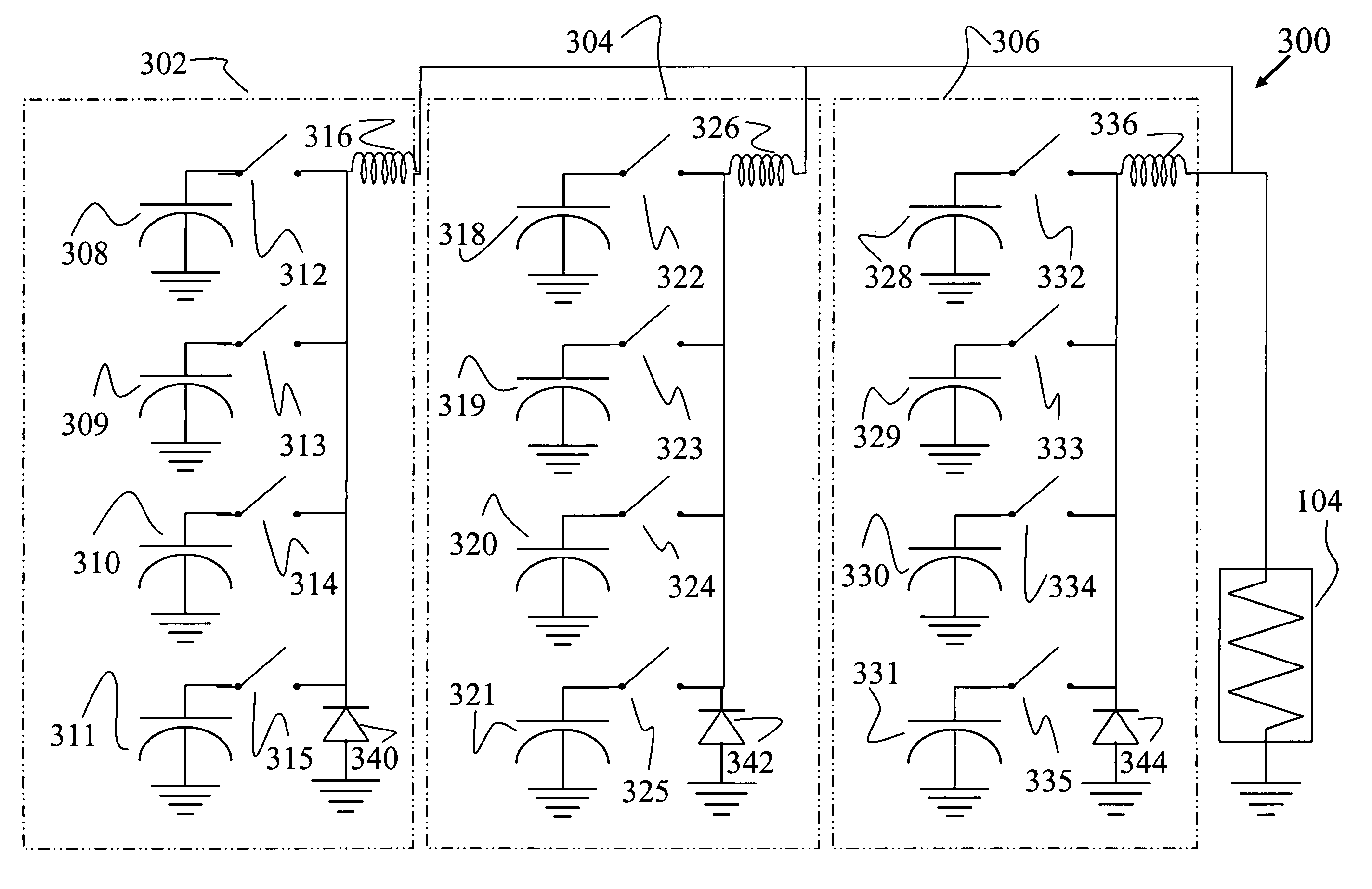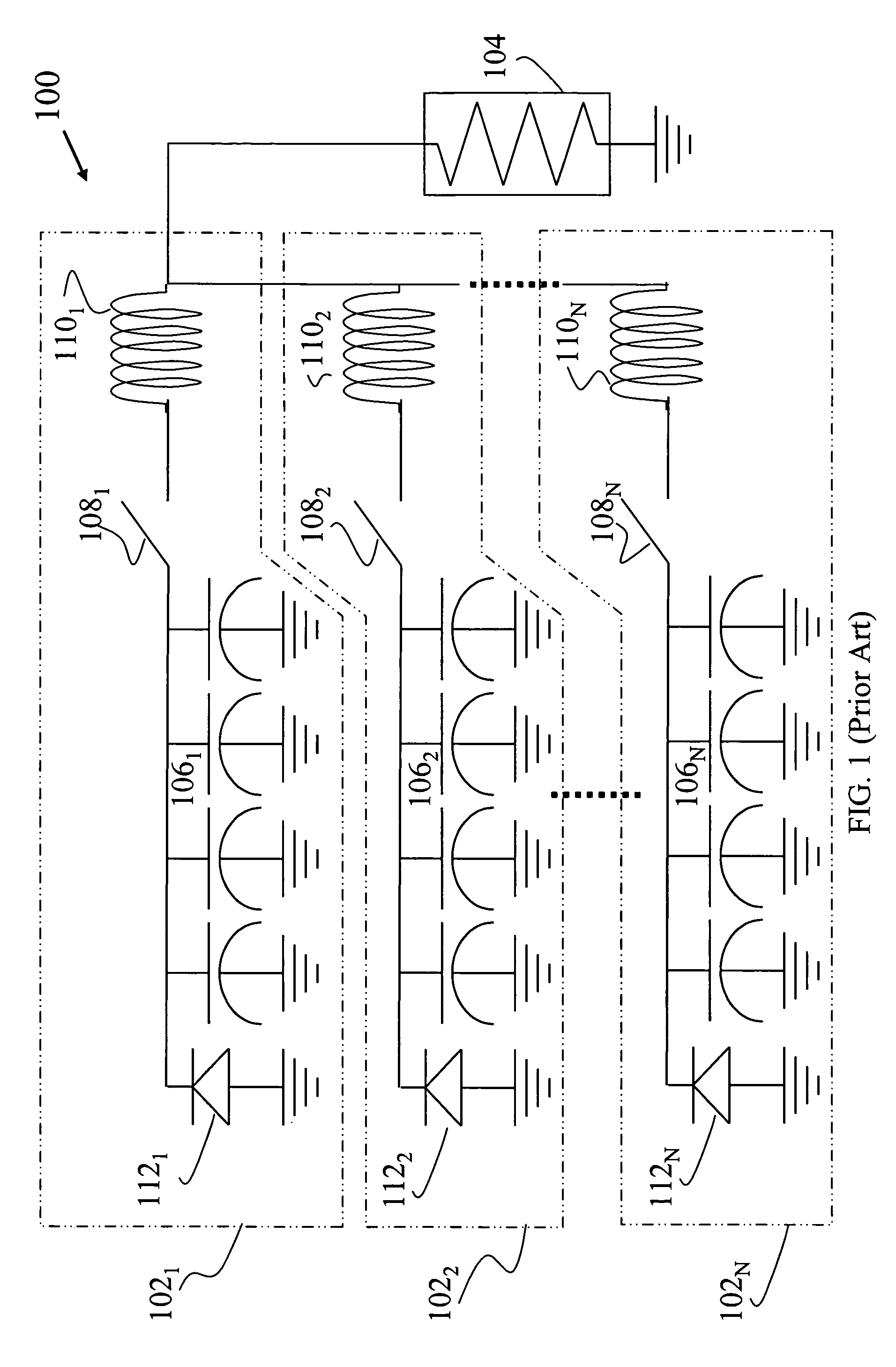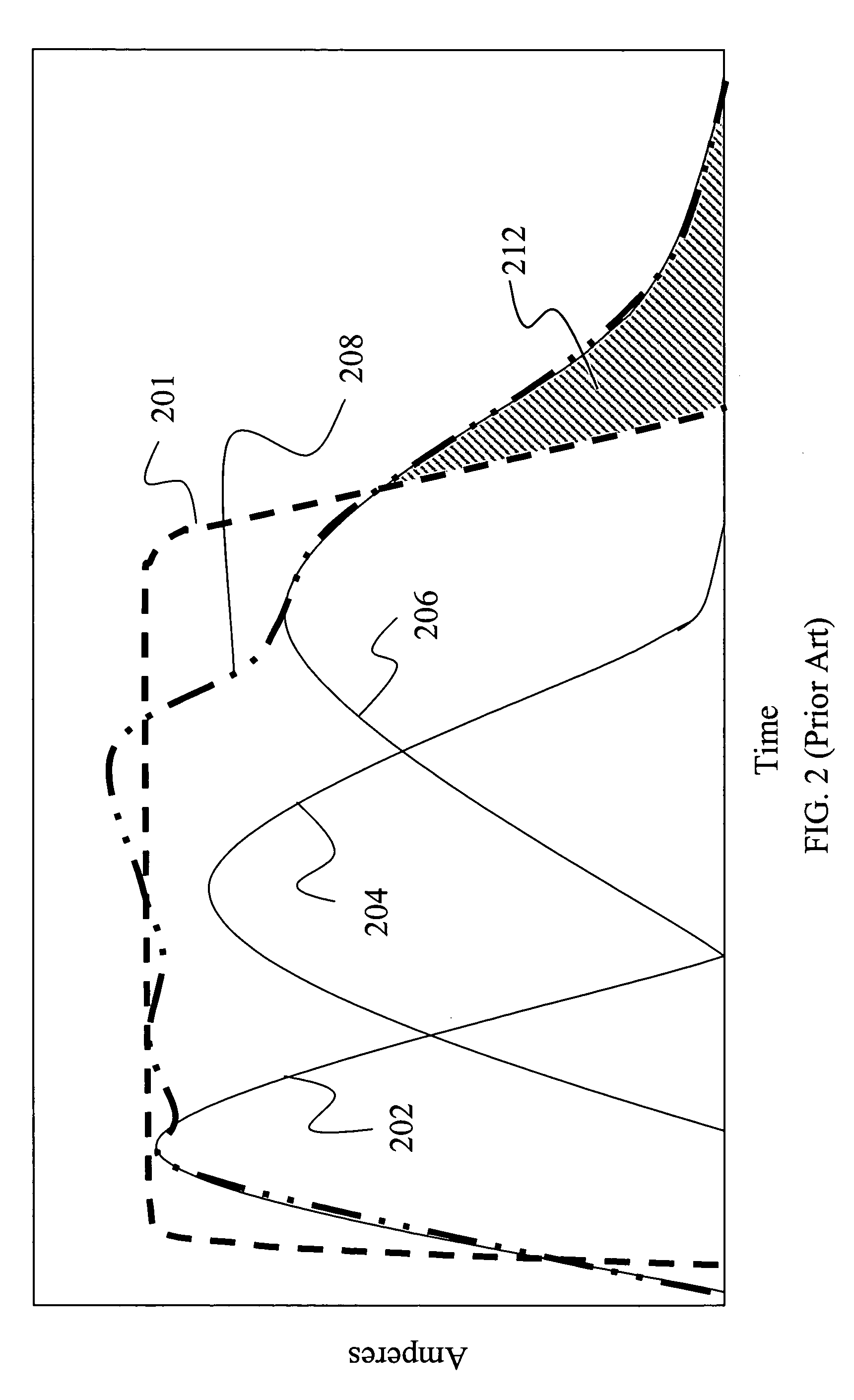Capacitor pulse forming network with multiple pulse inductors
a technology of inductors and capacitors, applied in the direction of pulse generation by energy-accumulating elements, electrochemical generators, secondary cells servicing/maintenance, etc., can solve the problem of not accurately tracking the desired flat top waveform, increasing the mass and size of the pulse forming network, and increasing the flux generated by the inductors. the effect of mass reduction, improved pulse shaping characteristics, and low inductan
- Summary
- Abstract
- Description
- Claims
- Application Information
AI Technical Summary
Benefits of technology
Problems solved by technology
Method used
Image
Examples
Embodiment Construction
[0020]The following description is not to be taken in a limiting sense, but is made merely for the purpose of describing the general principles of the preferred embodiments. The scope of the invention should be determined with reference to the claims.
[0021]Referring first to FIG. 3, a diagram is shown of a pulse forming network according to one embodiment of the invention. Referring also to FIG. 4, a graph is shown illustrating an output pulse waveform produced by one embodiment of the pulse forming network of FIG. 3.
[0022]The pulse forming network 300 includes multiple capacitor units being switched through each inductor. Specifically, the pulse forming network 300 includes a plurality (e.g., three) energy storage modules 302, 304, 306 each coupled to a load 104. Each module 302, 304 and 306 includes a plurality (e.g., four) of capacitor units coupled to the load 104 through an inductor via a switch. Each module 302, 304, 306 also includes an anti-reversing diode. As illustrated, m...
PUM
| Property | Measurement | Unit |
|---|---|---|
| time | aaaaa | aaaaa |
| frequency | aaaaa | aaaaa |
| electromechanical | aaaaa | aaaaa |
Abstract
Description
Claims
Application Information
 Login to View More
Login to View More - R&D
- Intellectual Property
- Life Sciences
- Materials
- Tech Scout
- Unparalleled Data Quality
- Higher Quality Content
- 60% Fewer Hallucinations
Browse by: Latest US Patents, China's latest patents, Technical Efficacy Thesaurus, Application Domain, Technology Topic, Popular Technical Reports.
© 2025 PatSnap. All rights reserved.Legal|Privacy policy|Modern Slavery Act Transparency Statement|Sitemap|About US| Contact US: help@patsnap.com



